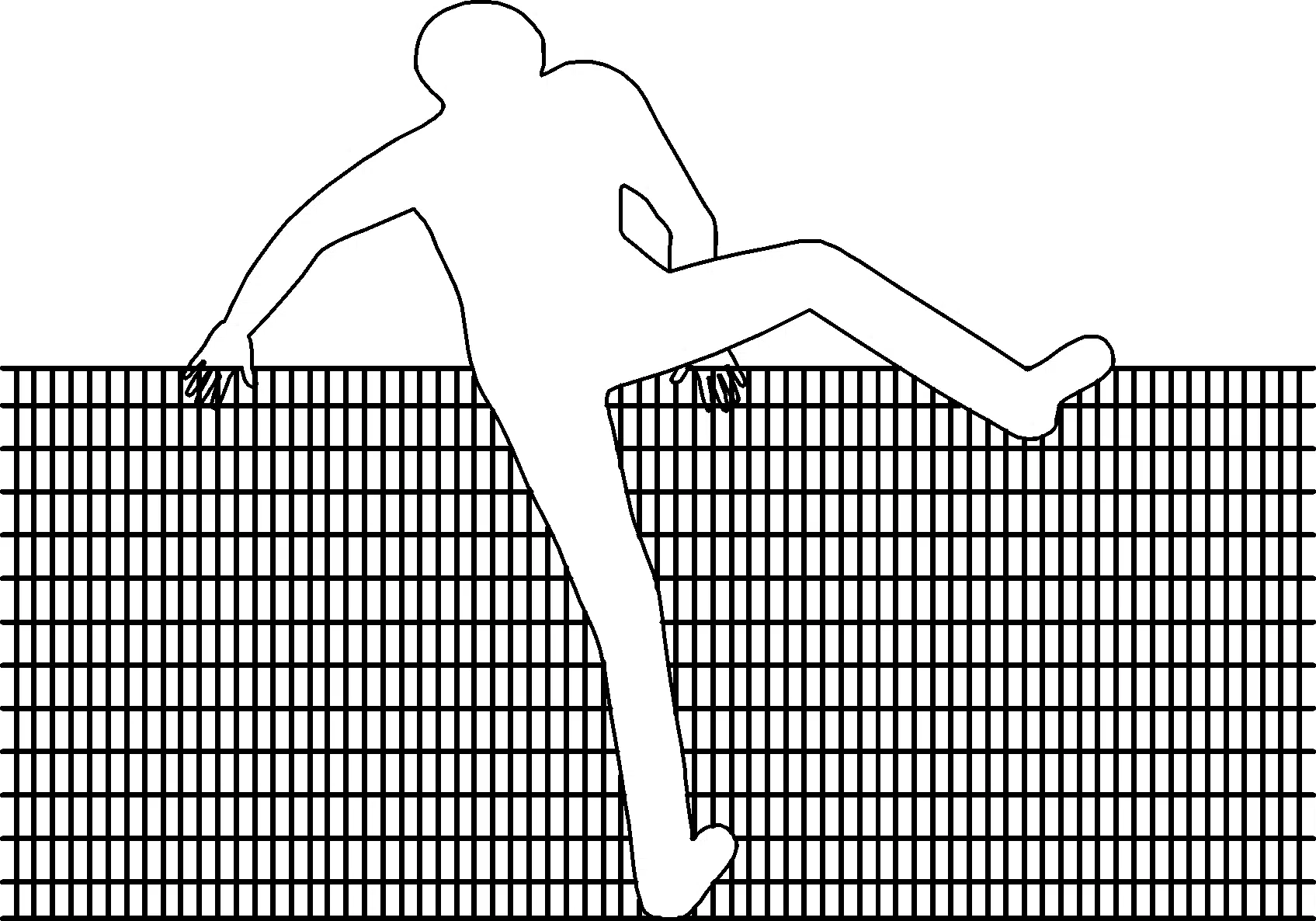Last edit: 25/07/2023

In the new version of the Standard, the size of openings that prevent a person from entering a safeguarded area have been clarified. The two important measures are as follows:
- 180 mm is the maximum size of a vertical or horizontal slot, useful to prevent a person from entering the safeguarded area;
- 240 mm is the maximum size of a square or circular opening, useful to prevent a person from having access to the dangerous area; Hereafter the normative language:
[ISO 13857: 2019] 4.4 Consideration of whole body access
Protective structures with slot openings with e > 180 mm and square or round openings with e > 240 mm (see 4.2.4.1) shall not be used without additional protective measures since they can allow whole body access.
Protective structures less than 1 400 mm in height, according to Table 2, shall not be used without additional protective measures.
Furthermore, the risk of climbing over a protection is treated by establishing that a height of 1 400 mm is sufficient to consider its climbing as an incorrect behaviour and not reasonably foreseeable . This height is important, since a person can also climb over a barrier that is 2m or more. It is therefore important to know that the harmonized technical legislation considers 1.4 m sufficient to segregate an area. It should be noted that some type C standards raise this limit. Heights of less than 1400 mm require additional protective (or risk reduction) measures.
The doubt is what additional protective measures can be used. Let's start with the definition of a Protective Measure:
[ISO 12100: 2010] 3 Terms and definitions
3.19 Protective Measure. Measure intended to achieve risk reduction, implemented
⎯ by the designer (inherently safe design, safeguarding and complementary protective measures, information for use) and/or
⎯ by the user (organization: safe working procedures, supervision, permit-to-work systems; provision anduse of additional safeguards; use of personal protective equipment; training)
A sign prohibiting the crossing of a 1.4 m high barrier is therefore a "Protective Measure". However, that does not mean that it is possible to systematically use barriers less than 1.4 m and place the sign "No climb over". A sincere and genuine risk assessement must be made, analyzing all the possibilities and leaving the sign as a "last resort".
For example, in a large billet transport line, in which the chain that moves them is 1 m high, it is not possible to install a 1.4 m barrier, since the bars would no longer be able to exit. However, it is possible, for example, to install an optical barrier equipped with muting function, which lets the bars exit and prevents personnel from entering.
In any case, the standard considers that structures less than 1000 mm are not suitable for limiting access. In other words, less than 1m, with a sign "No climb over" is not considered suitable in any case.
[ISO 13857:2019] Note b to Table 1 and Table 2:
Protective structures less than 1 000 mm in height are not included because they do not sufficiently restrict movement of the body.
